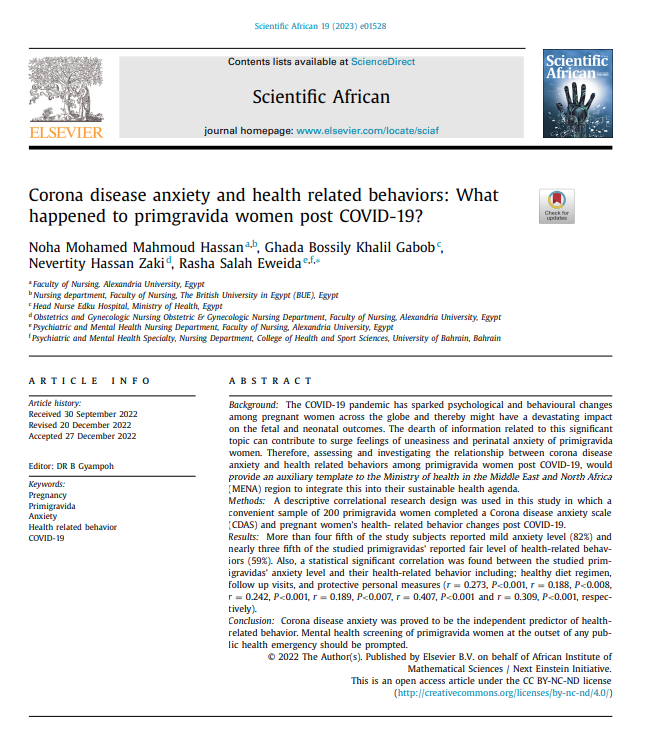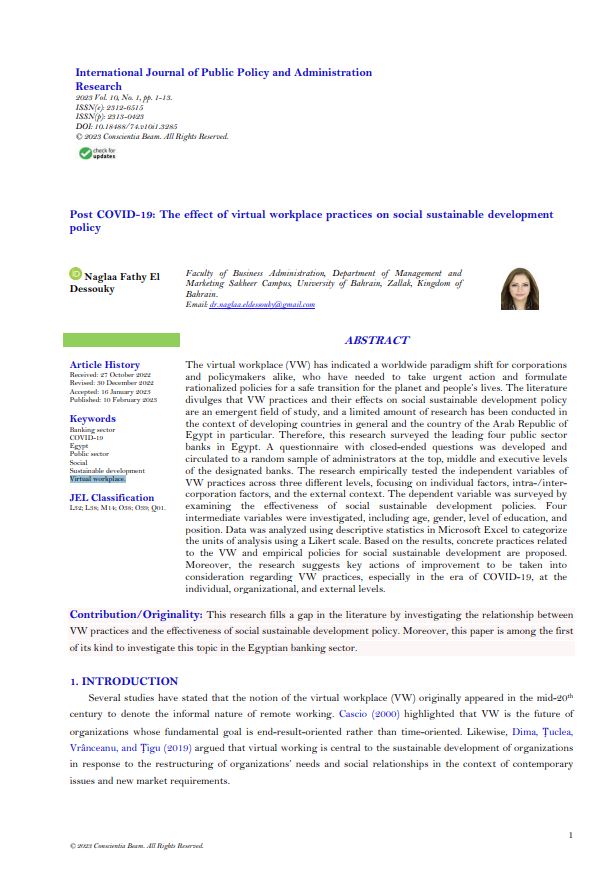وثيقة
Long term detection and quantification of SARS-CoV-2 RNA in wastewater in Bahrain
وكيل مرتبط
Naylor, P. , مؤلف مشارك
Rajab, E., مؤلف مشارك
Mathews, B., مؤلف مشارك
Coskuner, Gulnur, مؤلف مشارك
Jassimd, Majeed S., مؤلف مشارك
Al-Qahtani, M. , مؤلف مشارك
Stevenson , N.J, مؤلف مشارك
عنوان الدورية
Journal of Hazardous Materials Advances
العدد
Volume 7, August 2022
دولة النشر
Netherlands
مكان النشر
ScienceDirect
الناشر
Elsevier B.V.
تاريخ النشر
2022
اللغة
إنجليزي
الموضوع
الملخص الإنجليزي
Abstract:
Wastewater-based epidemiology is a corroborated environmental surveillance tool in the global fight against SARS-CoV-2. The analysis of wastewater for detection of SARS-CoV-2 RNA may assist policymakers to survey a specific infectious community. Herein, we report on a long-term quantification study in Bahrain to investigate the incidence of the SARS-CoV-2 RNA in wastewater during the COVID-19 pandemic. The ∼260,000 population of Muharraq Island in Bahrain is served by a discrete sewerage catchment, and all wastewater flows to a single large Sewage Treatment Plant (STP) with a capacity of 100,000 m3/day. The catchment is predominately domestic, but also serves several hospitals and Bahrain's international airport. Flow-weighted 24-h composite wastewater samples for the period February 2020 to October 2021 were analyzed for the presence of SARS-CoV-2 N1, N2 and E genes. A Spearman rank correlation demonstrated a moderate correlation between the concentration of SARS-CoV-2 N1, N2 and E genes in the wastewater samples and the number of COVID-19 cases reported on the same day of the sampling.
SARS-CoV-2 viral genes were detected in wastewater samples shortly after the first cases of COVID-19 were reported by the health authorities in Bahrain by reverse transcription–polymerase chain reaction (RT-qPCR). The viral genes were detected in 55 of 65 samples (84.62%) during the whole study period and the concentration range was found to be between 0 and 11,508 RNA copies/mL across the viral genes tested (in average N1: 518.4, N2: 366.8 and E: 649.3 copies/mL). Furthermore, wastewater samples from two COVID-19-dedicated quarantine facilities were analysed and detected higher SARS-CoV-2 gene concentrations (range 27-19,105 copies/mL; in average N1: 5044, N2: 4833 and E: 8663 copies/mL). Our results highlight the potential use of RT-qPCR for SARS-CoV-2 detection and quantification in wastewater and present the moderate correlation between concentration of SARS-CoV-2 genes with reported COVID-19 cases for a specified population. Indeed, this study identifies this technique as a mechanism for long term monitoring of SARS-CoV-2 infection levels and hence provides public health and policymakers with a useful environmental surveillance tool during and after the current pandemic.
المجموعة
المعرف
https://digitalrepository.uob.edu.bh/id/6e932c2f-292a-433b-90c3-f8994024c2c8
مواد أخرى لنفس الموضوع





